Interview: on the Ghostly Costume Design of "The Beguiled"
 Wednesday, January 3, 2018 at 9:00PM
Wednesday, January 3, 2018 at 9:00PM by Nathaniel R
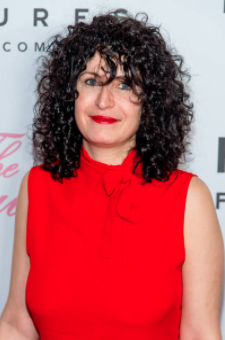 The costume designer Stacey Battat has, to date, worked mostly in female-oriented contemporary indies. That's quite a perfect niche to build a design career from. Or at least it is when the women who've visually helped define your early work are such stylish talented icons themselves. Battat first made her mark on two Parker Posey features in the late Aughts (Broken English, Happy Tears). Soon after she was deep in the Julianne Moore business (Still Alice, Freeheld, What Maisie Knew). Other credits include The Disappearance of Eleanor Rigby: Her and Him and Mozart in the Jungle but it's been her partnership with writer/director Sofia Coppola that's come to define her young career.
The costume designer Stacey Battat has, to date, worked mostly in female-oriented contemporary indies. That's quite a perfect niche to build a design career from. Or at least it is when the women who've visually helped define your early work are such stylish talented icons themselves. Battat first made her mark on two Parker Posey features in the late Aughts (Broken English, Happy Tears). Soon after she was deep in the Julianne Moore business (Still Alice, Freeheld, What Maisie Knew). Other credits include The Disappearance of Eleanor Rigby: Her and Him and Mozart in the Jungle but it's been her partnership with writer/director Sofia Coppola that's come to define her young career.
The two began working together on the LA dreamy Somewhere (2010). Battat proved invaluable to all the fashiongasms of Coppola's arguably most underrated feature The Bling Ring (2013). Then came an atypical challenge: a forgotten girls school deep in the Civil War era.
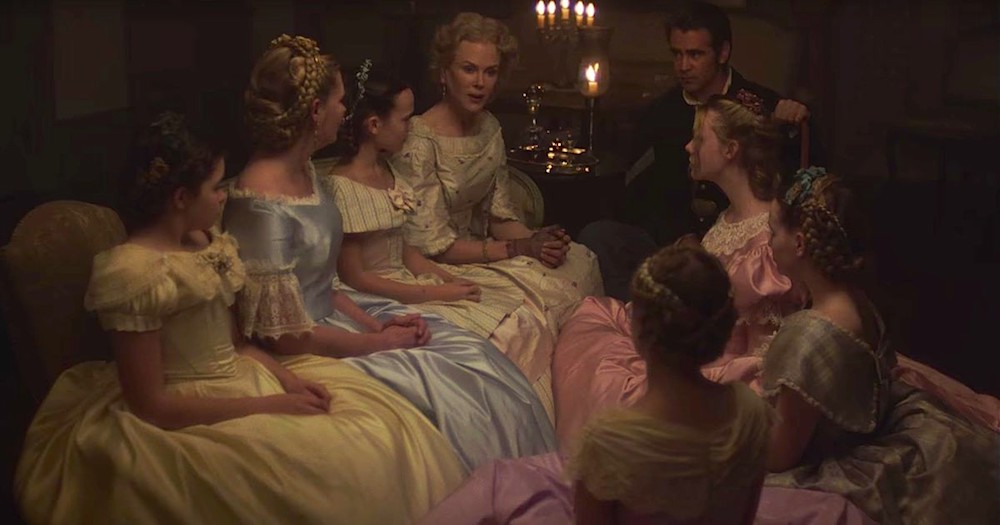
I spoke with Battat recently by phone to talk about one of the most visually striking films this past year, The Beguiled, and what she brought to it. Our interview, edited for clarity and length follows...
NATHANIEL R: Wet met a few years ago at a party for Julianne Moore. You'd just done two movies with her and we were joking that “plaid” might accidentally become your signature because you'd put her in it in both movies. So congratulations on The Beguiled. You've escaped contemporary clothes... and plaid!
STACEY BATTAT: It was a departure BUT there’s definitely two plaid dresses. [Laughs] Apparently I’m very drawn to plaid!
I can't say I noticed them straightaway this time. From a distance the dresses in this one often look like they're all of one palette -- the variations only get noticeable if the camera is closer.
I’m glad we were able to achieve that.
Did you and Sofia discussed the wide shot versus closeup effects of these clothes?
We did not have a direct conversation like that but it was on the roster, this white diaphanous appeal. The goal was to make a group of ghostly ladies. Sofia wanted them to feel like ghosts left behind.
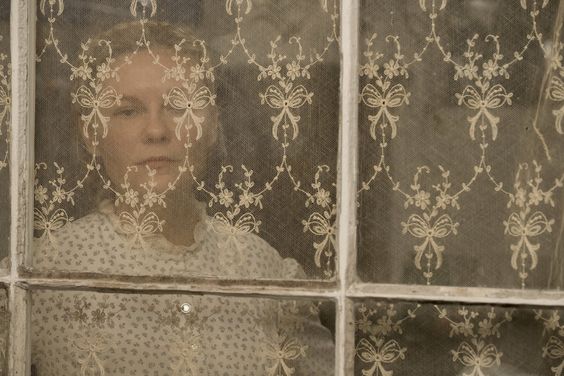
You've got three red carpet fixtures in the movie -- Dunst, Fanning, Kidman. But the movie is not glamorous in a traditional way. Were you consciously attempting to downplay all that collective beauty?
The idea was to keep it simple because these women had very little. [They did not have] the things we do, nowadays, to enhance our looks.
I was most impressed by Kidman's looks. Her dresses are always severe but in such varied interesting ways. There’s one that has dark buttons from the neck to waist. It weirdly felt like a kind of armor even though it’s a dress.
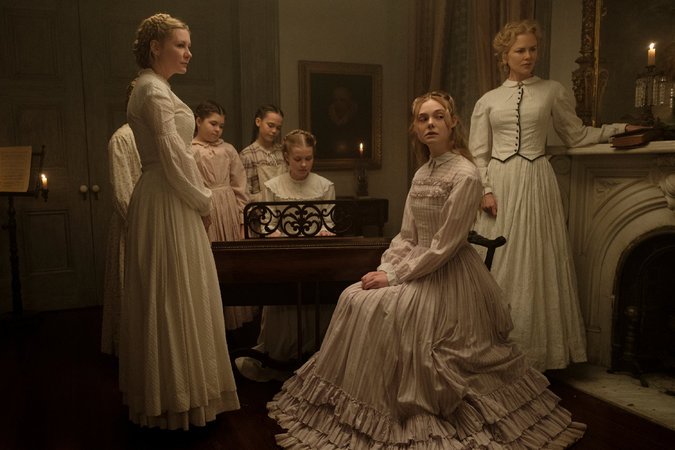
Yes. We wanted Nicole to feel strong and stern... and that she’s also maybe crazy a little [Laughter]. There’s this idea that she’s a little “off” and, for sure, guarded. And that was something I thought about in terms of the silhouette. The hem of that bodice [that you're talking about] is shaped like a vest. She’s the only one that has that silhouette. To our modern eye that makes it feel like a business suit.
And then of course there's that famous scene were the women all get dressed up. It's a standout scene because it's so atypical for this particular movie to have that many colors happening all at once.
We talked about the colors a lot. Sofia and I chose the fabrics but we were working with budget limitations. We did want [the characters] to feel more glamorous, like they were making an effort. So the dresses are kind of faded but more vibrant.
How heavily researched was Colin Farrell's underwear?
Very research heavy -- I do have a book called "The History of Undergarments"!
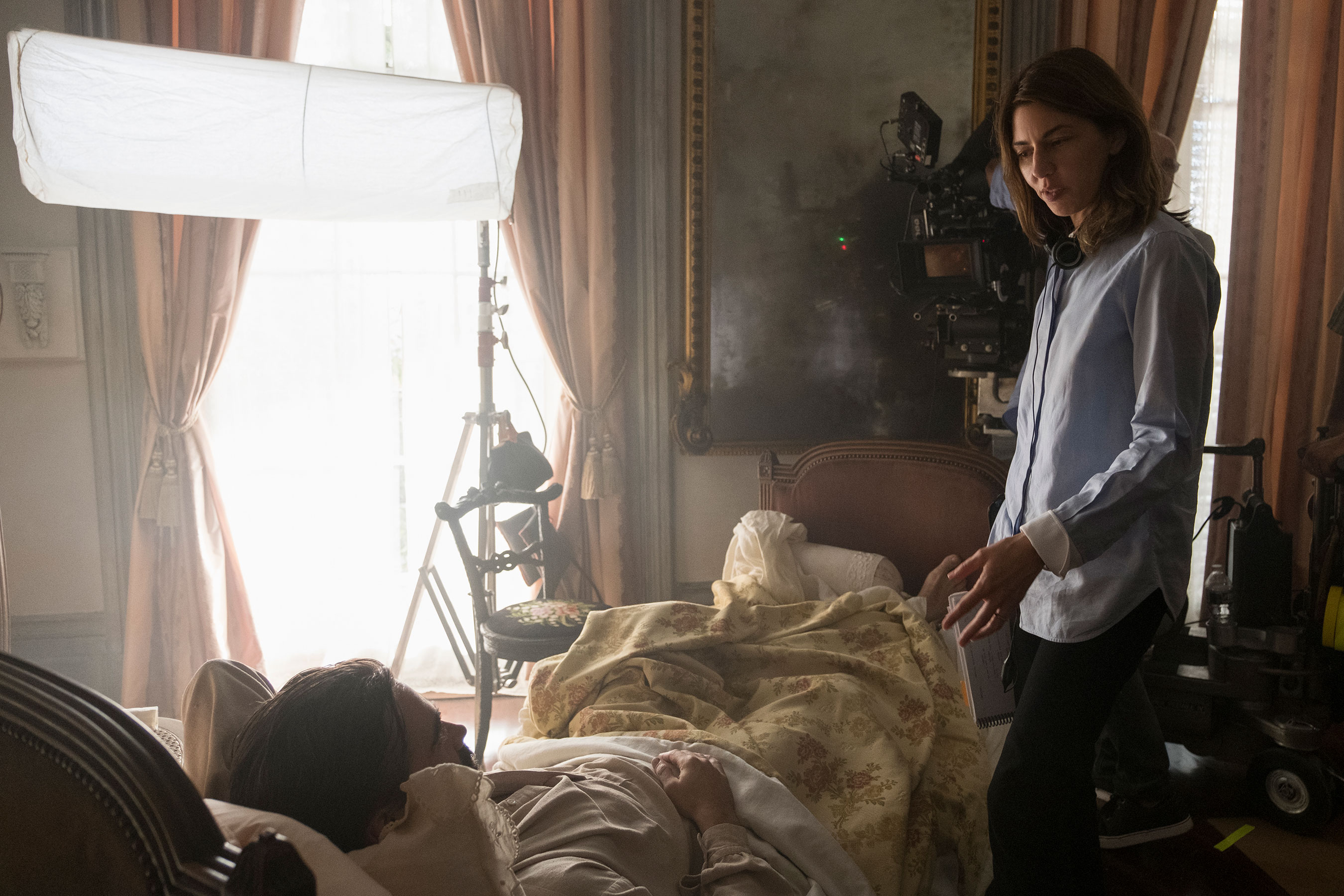
Are the actors always in period specific underwear even though we can't usually see them? I can't imagine that stuff would be comfortable to wear in the heat?
Colin didn’t have to wear the underewar every day but the girls did. There's a form to skirts and petticoats -- the stuff the women wear underneath is what gives them that silhouette. Without that foundation it doesn’t work right. So we kept it pretty authentic. Everyone had stockings and a petticoat. The corsets for the young girls had to be custom made. You can’t really find that stuff anymore -- a 12 year-old was almost marrying age!
The younger cast members, with the exception of Oona Lawrence as Amy, don't really get individual scenes to establish their characters. So how much work did you do to differentiate them even if we can't always consciously clock it?
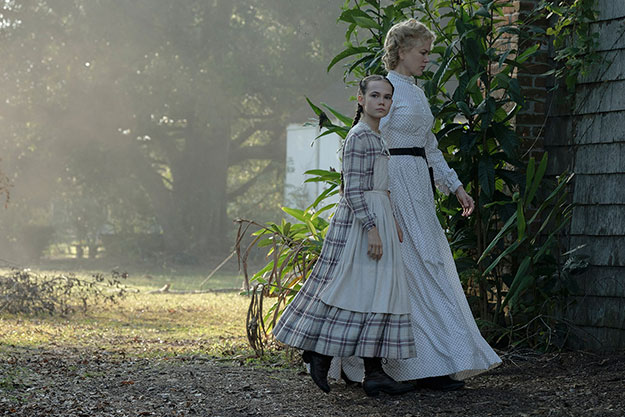
STACEY BATTAT: For Oona's "Amy" we wanted the clothes to feel a little too big for her, like they were all hand-me-downs. They’re all trying to make the most of what they got.
For Angourie Rice’s “Jane” we brought elements of the civil war into the costumes without having to overtly say it. For Jane it was always part of the design that there were panels. If you look at her clothes, at the bottom of skirts there’s one fabric, and then another fabric. In my mind she had grown -- her skirts got too short. We don’t ever say that but it's there.
A lot of what we see we might not even be aware of but it infers meaning.
That is true. The movie I’m working on now is not at all about the costumes but there are so many subtle things you can do to tell a story.
Speaking of... what is next?
I’m working on Gloria by Sebastian Lelio with Julianne Moore.
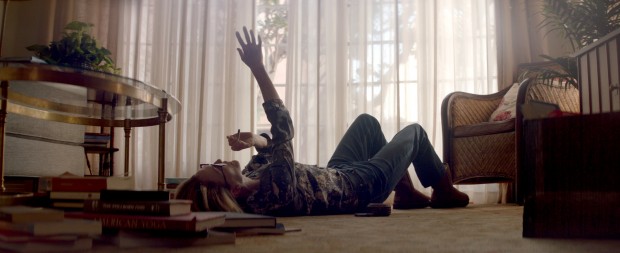
NATHANIEL: Oh, I love the original. And he's doing his own remake. You’ve designed for Julianne a handful of times now.
STACEY BATTAT: She’s as good as it gets. I love her. And she has a lot of great ideas.
About the costumes, too?
Absolutely. But she’s also very trusting. It’s the same with Sofia. We talk about ideas a lot but she's also willing to let you go as opposed to someone more controlling.
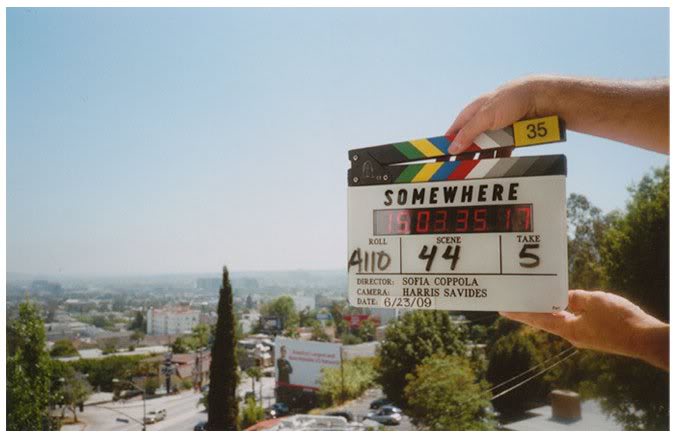
NATHANIEL: Do you prefer that, the long term working relationships? You've been working with Sofia since Somewhere (2010), for example.
I think anyone would! The more you work with people the easier it is to understand them and you can develop a shared visual lexicon. And movies are hard to make! They’re intense and you’re away from home working long hours. So you want to work with people who you know and you know are nice to be around.
That makes a lot of sense. Any genre or time frame you’d like to try soon?
I’m really drawn to the '20s and '30s so hopefully I’ll get to do that. I’d like for someone to remake Tender is the Night!




Reader Comments (10)
Even if the film as a whole is lacking, the production elements are beyond stunning. Beautiful costume work.
Yeah is movie is worthless, but the costumes, the production design,
and especially the cinematography -- flawless.
I love the film as Stacey's costumes are so incredible as I hope she gets nominated.
Some nutters up there. The film is amazing.
Speak to us more about Colin Farrell’s underpants.
I LOVE the movie. At least I hope it gets an Oscar nom for the sublime costume.
Mike - LOL. thank for you receiving the question as it was intended!
The costumes are so deserving. I love what she said about the vest silhouette being an era-appropriate version of a business suit.
I got to work with Stacey on Gloria for a couple weeks and she is so sublime.
I hope the costume branch remembers her as she is totally deserving of a nomination. The production design and cinematography are also stellar.
I know she's a longshot, but I'm rooting for Sofia Coppola in adapted screenplay, too. Really sharp work and better than some of the frontrunners which are being predicted (Victoria and Abdul, Wonder come to mind).